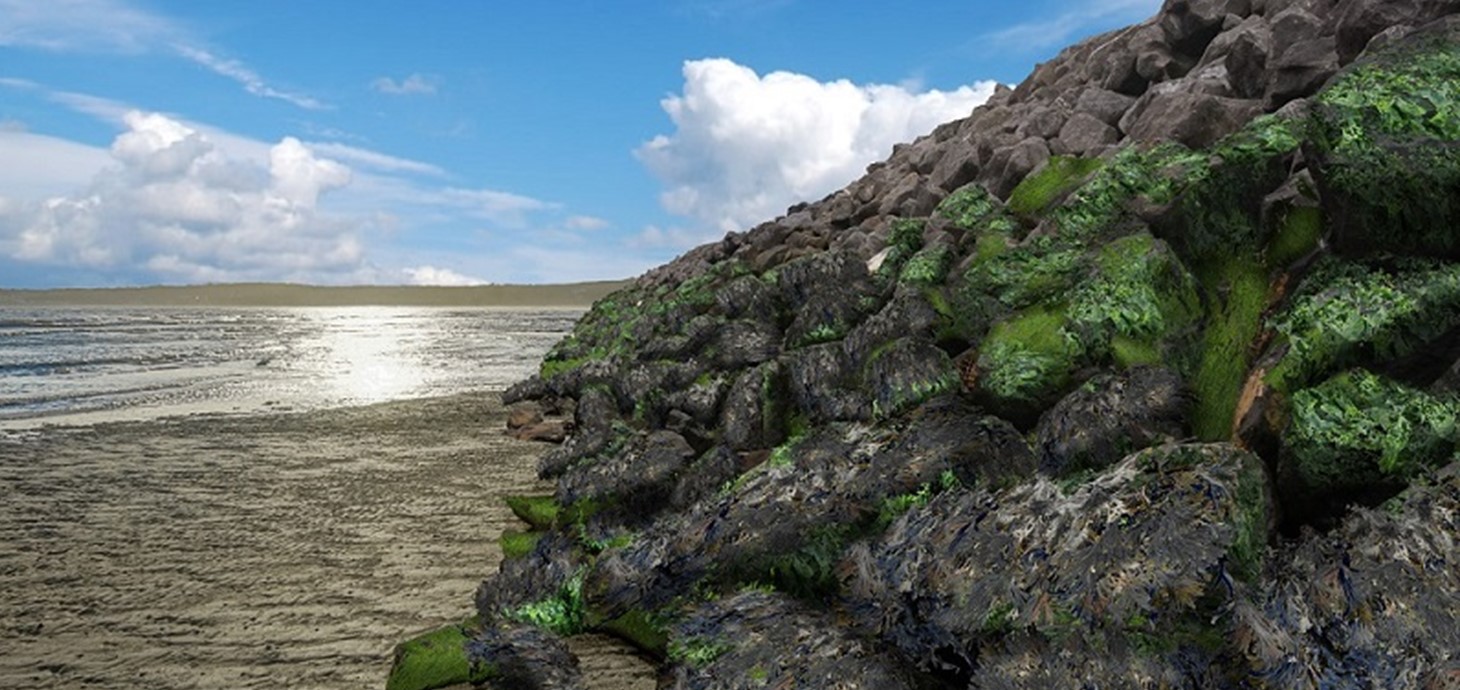
Researchers asked participants how appealing, interesting, and calming they found images of seawalls with different numbers of seaweed and animal species on them.
Seeing a larger number of species on urban coastlines - from marine animals to seaweed - is likely to improve the wellbeing of local people and visitors, new research from a team at Swansea University has revealed. The findings provide further evidence that biodiversity brings wide-ranging benefits.
Studies of land-based environments such as meadows, woodlands, and city parks have shown that people often find places that contain lots of different types of plant and animal life to be more visually pleasing and interesting, as well as more likely to relieve stress.
However, we know much less about seashore species and whether they generate the same positive feelings that land-based wildlife does, despite almost half of the world’s population living close to the coast.
Anecdotal evidence suggests that people may associate marine life such as seaweeds with unpleasant slimy textures and smells or perceive them to be messy additions to coastlines. As such, having a greater variety of coastal species may not lead to the same positive effects on wellbeing as are observed on land.
This is important because coastal structures like seawalls are becoming increasingly familiar sights and can be home to many different marine species. Many of them now incorporate measures to conserve or promote biodiversity, such as the Sea Hive project in Mumbles in Swansea, but how these might affect the perceptions and wellbeing of beach visitors isn’t well understood.
To understand how biodiversity may shape peoples’ views, scientists at Swansea University undertook a research study.
They recruited 937 participants from the UK and Ireland. They asked them how appealing, interesting, and calming they found images of seawalls with different numbers of seaweed and animal species on them.
The images included between zero and eight different marine species: comprising of different types of seaweeds, barnacles, limpets, mussels and anemones.
To see whether the type of seawall that seaweeds and animals were growing on changed peoples’ views, images ranged across three different structure types: from regular-shaped concrete walls to more irregular boulder – or “rip-rap” – sea defences.
They also included two different viewing scales – from the whole structure, to close-up viewing - to see if how people view seawalls affects their perceptions.
The survey found:
- Biologically diverse images on irregular structures were rated most favourably;
- Respondents strongly and positively valued scenes that were seen as diverse, as they were seen as more interesting and calming;
- The older sea wall and the rip rap were seen as more “natural” and therefore viewed more positively than the more “artificial” regular sea wall;
- Diversity and naturalness were rated as the most important qualities in participants’ comments;
- This was especially true with close-up images, which is how people sometimes view coastal habitats, for example exploring or looking at rockpools
Read the research paper in People and Nature
Dr Tom Fairchild of Swansea University, lead researcher, said:
“People found structures that had more species to be more appealing, interesting, and calming to look at. This suggests that high numbers of species provide a range of human benefits, despite occasional negative feelings towards species.
This occurred because structures were perceived to be more “natural” and have greater “biodiversity” when they were home to a wide variety of sea life: strongly influencing how we see natural spaces.
As public awareness about human impacts on the natural world increases, projects to conserve or enhance biodiversity are becoming more common.
Our study supports the idea that designing seawalls to support biodiversity not only brings benefits to wildlife but can also benefit the lives of people who live by or use our urban coastlines.”
The research was carried out as part of the UK/Ireland Ecostructure project and published in People and Nature.
Study biosciences at Swansea University
Sustainable futures, energy and the environment - Swansea research
